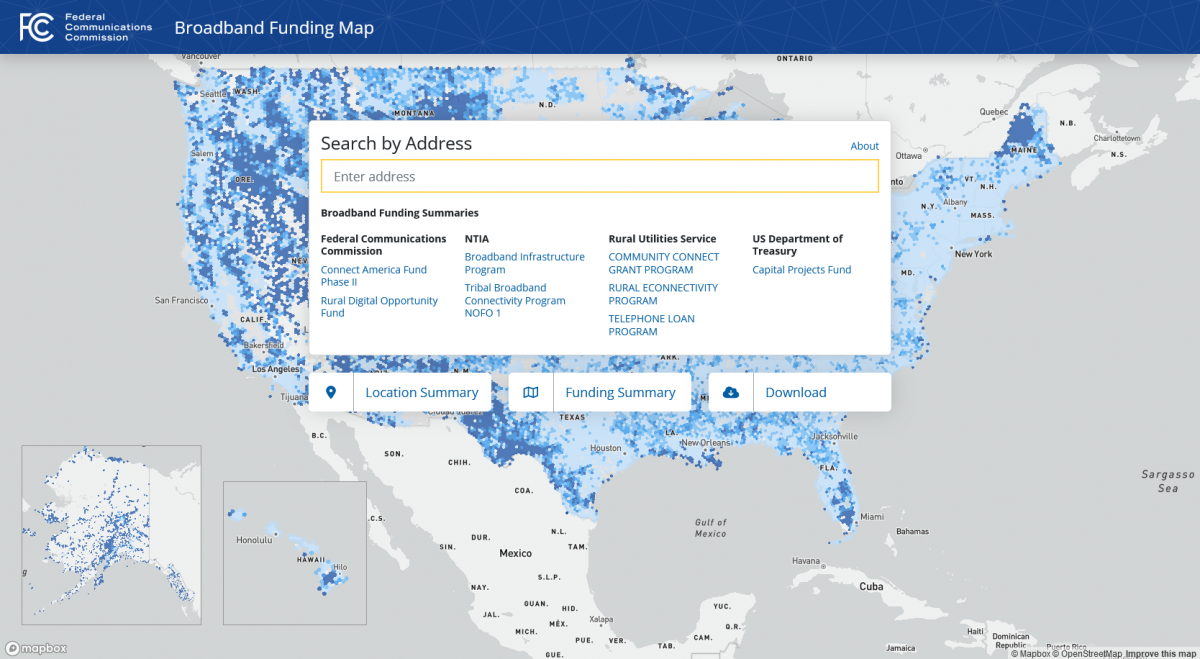It’s Time to Kick the Tires on Those Enforceable Broadband Deployment Commitments
Thursday, September 28, 2023
Digital Beat
It’s Time to Kick the Tires on Those Enforceable Broadband Deployment Commitments

The goal of the National Telecommunications and Information Administration's (NTIA) $40+ billion Broadband Equity Access and Deployment (BEAD) Program is to ensure that everyone in the United States has access to reliable, high-speed, and affordable broadband. Part of the challenge is how to treat areas where funding already has been awarded for broadband deployment. Will all awardees perform as expected?

Some background: In an effort to target funding to unserved and underserved areas, NTIA concluded that states may not treat as “unserved” or “underserved” any location that is subject to an enforceable federal, state, or local commitment to deploy qualifying broadband. Such commitments exist, for instance, when an entity is required to deploy qualifying 100/20 Mbps broadband service to specific locations pursuant to state grants or loans, the U.S. Department of Agriculture’s ReConnect grants or loans, grants made under the CARES Act or American Rescue Plan Act, or Federal Communications Commission (FCC) high-cost support—including Connect America Fund (CAF) Phase II auction support and Rural Digital Opportunity Fund (RDOF) support.
In an ideal world, all of the existing funded broadband deployment projects will be completed, on schedule, and states will be able to target their BEAD funding to the remaining unserved and underserved communities, meeting the Administration’s goal of achieving internet for all.
Sadly, there will be failures. It’s inevitable. Some projects may not be completed as originally planned. The service delivered by some may fall short. Even after this historic infusion of capital, pockets of communities across the country may remain unserved.
Nearly 3.5 million locations nationwide are slated to get high-speed internet through RDOF. But—we won’t know whether all of the RDOF projects will be successful for years. The first required interim 40 percent deployment milestone for some RDOF recipients (those authorized in 2021) will not be until December 31, 2024, with a final deadline of December 31, 2027. But for most RDOF recipients, the first interim deployment milestone will be the end of 2025, with construction to be completed by the end of 2028. The first deadline for submission of testing results to confirm that RDOF companies are actually offering broadband that meets the required service level (speed and latency) isn’t until July 2027. By that time, the BEAD funding will be long gone.
There already are troubling reports that some companies receiving FCC funding are failing to move forward to meet their commitments. In some states, there’s been no visible activity at all for one or more recipients of FCC funding.
What should state broadband offices do?
Across the nation, states are busy at work drafting and finalizing their Initial Proposals, due to NTIA by December 27, 2023, for how they intend to implement the BEAD program.
One of the tasks in the months to come will be to finalize the list of locations that will be eligible for BEAD funding. NTIA is willing to waive the requirement that locations or areas with prior enforceable commitments be treated as served if a state can demonstrate to NTIA’s satisfaction that such locations should be treated as unserved in order to achieve the goals of the program.
The state broadband offices are the boots on the ground, working hard to ensure that all residents in their state have access to reliable, high-speed internet. It’s imperative that they take a closer look now at what’s going on in their state.
Louisiana is requiring quarterly progress reports from entities with existing federal awards—including miles constructed, locations with access to broadband, and funds expended—to better assess whether those awardees will be living up to their commitments. Companies that refuse to provide such information do so at their own peril. Louisiana reserves the right to treat locations within an awarded area as unserved for any company that fails to file the required progress report for two consecutive quarters. It’s not wise to stiff the state office that soon will be handing out many millions, or billions of dollars, for future broadband deployment.
What are the warning signs that an awarded deployment project is off track?
- Has the funding recipient been working to acquire any necessary easements or access to rights-of-ways? Have any requests for permits been filed?
- For planned fiber deployments, has the funding recipient reached out to existing pole owners for pole attachments?
- Does the existing awardee have a website keeping the community informed as to the expected timing of the planned construction? Has it engaged in any sort of pre-deployment solicitation of customers? Is there a service qualification tool on the company’s website where people can find out if service is available at their address?
For areas where there’s a FCC funding commitment, there are additional tools at the state’s disposal. FCC recipients of high-cost support (including CAF and RDOF support) are required to become Eligible Telecommunications Carriers (ETCs) in order to receive such support. Under federal law, ETCs must advertise the availability of their supported services. Moreover, the FCC requires RDOF recipients to offer Lifeline and voice service throughout their FCC-funded service territory—starting the month after they are authorized to receive funding—even in areas where they have not yet deployed broadband.
The absence of a company website advertising Lifeline or voice service in areas receiving FCC funding should be a big red flag to state broadband offices. A service provider is not “offering” service if prospective customers have no way of knowing that service is available.
State public utility commissions (PUCs) are required to annually certify to the FCC that the high-cost support recipients in their state are using the support for its intended purpose. (In some states, the service provider must self-certify.) That certification is due October 1st. If the state PUC fails to make this certification, the FCC stops payments to the relevant ETC.
While the annual certification is a rubber stamp process in many states, in other states, the public utility commission (PUC) performs due diligence on whether the ETC is meeting its requirements. For instance, the Mississippi Public Service Commission requires ETCs within its jurisdiction to submit an annual report with a description and samples of marketing materials for voice and Lifeline service to provide an evidentiary foundation for the required certification. State PUCs can and do initiate investigations of ETCs suspected of not meeting their ETC requirements. State PUCs have the power to revoke the ETC designation of companies they previously designated to receive funding for failure to meet relevant requirements.
State broadband offices should reach out to their counterparts at the relevant PUC to learn more about the track record of ETCs in the state.
It’s time for states to double down on examining whether current funding recipients are going to perform as promised. Existing funding commitments help take locations off the map, enabling the states to stretch their dollars farther—but it’s critical to ensure that those locations in fact will get service.
This article originally appeared on Medium; it is reprinted here with permission of the author.
Carol is a former senior official from the Federal Communications Commission, where she led teams working on initiatives to modernize the FCC’s $9 billion Universal Service Fund to support broadband. She currently is the principal of Mattey Consulting LLC, which provides strategic and public policy advisory services to broadband providers and other entities seeking funding for broadband. She is partnering with Irby Utilities to help achieve the vision of bringing sustainable, reliable internet to everyone in rural America.
The Benton Institute for Broadband & Society is a non-profit organization dedicated to ensuring that all people in the U.S. have access to competitive, High-Performance Broadband regardless of where they live or who they are. We believe communication policy - rooted in the values of access, equity, and diversity - has the power to deliver new opportunities and strengthen communities.
© Benton Institute for Broadband & Society 2023. Redistribution of this email publication - both internally and externally - is encouraged if it includes this copyright statement.
For subscribe/unsubscribe info, please email headlinesATbentonDOTorg






